Top Traditional Japanese Toys
Traditional Japanese toys are more than just playthings, they are a window into Japan’s rich cultural heritage. These toys have been passed down for generations, each carrying unique historical and artistic value. Many of them have roots in the Edo period or earlier and have been enjoyed by both children and adults for centuries.
Unlike modern electronic toys, traditional Japanese toys emphasize skill, patience, and craftsmanship. Many require physical coordination, such as Kendama and Beigoma, while others, like Fukuwarai and Kamifusen, bring joy through their simplicity. Some toys also hold deeper symbolic meanings, such as the perseverance represented by Daruma Otoshi or the decorative elegance of Hagoita paddles.
Despite advances in technology and changing trends, these toys remain popular today. They are still used in cultural festivals, competitive events, and even as collectible art pieces. Traditional toy makers continue to produce them, keeping the craftsmanship alive. Whether for play, decoration, or cultural appreciation, these toys offer a timeless connection to Japan’s past while continuing to entertain new generations.
1. Kendama (けん玉)
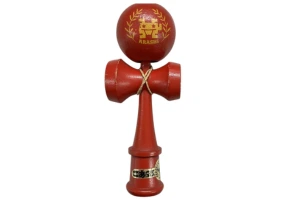
Kendama is a wooden toy consisting of a handle (ken), a ball (tama), and three cups. A string connects the ball to the handle, and players attempt to catch the ball in various ways.
History and Origin
Kendama was introduced to Japan in the 18th century and has roots in European ball-and-cup games. Over time, it developed into a unique form of play with many advanced techniques and tricks.
Why It Remains Popular
Kendama challenges coordination, focus, and patience. It has evolved into a competitive sport with global tournaments, making it a favorite among both children and adults.
2. Koma (独楽) – Traditional Spinning Tops
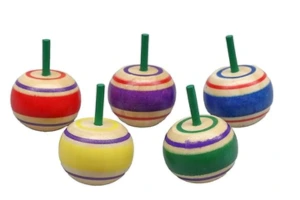
Types of Koma
There are various types of Japanese spinning tops, including Edo-style koma, which are painted with vibrant colors, and battle tops, which are designed for competitive play.
Craftsmanship
Japanese koma are traditionally made from wood or metal, often handcrafted by skilled artisans.
Use in Festivals and Competitions
Spinning tops are common in New Year celebrations and traditional competitions, where players try to knock each other’s tops out of a ring.
3. Daruma Otoshi (だるま落とし)
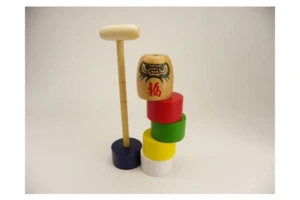
Daruma Otoshi consists of stacked wooden layers with a Daruma head on top. Players use a hammer to remove the layers without making the Daruma fall.
Skill and Challenge
This game requires precision and careful technique to succeed.
Symbolism of Daruma
The Daruma figure represents perseverance and good fortune, making this toy a meaningful part of Japanese culture.
4. Beigoma (ベーゴマ) – Metal Spinning Tops
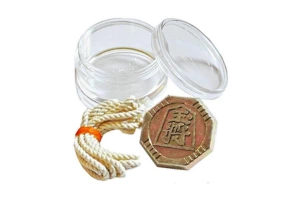
How It Works
Beigoma are small metal tops spun using a wound string. Players release them into an arena, aiming to outspin or knock out their opponent’s top.
Popularity Before Modern Beyblade
Before the rise of Beyblade, Beigoma was a popular playground game in Japan.
Modern Tournaments
Despite its decline in everyday play, Beigoma tournaments are still held, attracting both young and old players.
5. Menko (めんこ) – Traditional Card Game

Menko is a game played with thick paper or cardboard cards featuring designs of anime characters, samurai, or historical figures.
How It’s Played
Players try to flip their opponent’s card by slamming their own onto the ground.
Popularity Over Time
Menko has been enjoyed across different historical periods and continues to be a nostalgic pastime for many.
6. Fukuwarai (福笑い) – Japanese "Pin-the-Face" Game

Fukuwarai is a traditional game where blindfolded players attempt to place facial parts onto a blank face.
New Year Tradition
This game is commonly played during the New Year, bringing laughter to families.
Fun Factor
The unpredictable and silly results make Fukuwarai a favorite among children and adults alike.
7. Take-Tombo (竹とんぼ) – Bamboo Dragonfly Toy
How It Works
Taketombo is a small bamboo propeller that flies when spun between the fingers.
Long History
This simple yet fascinating toy has entertained Japanese children for centuries.
Skill Required
Launching and controlling its flight requires practice, making it an engaging activity.
8. Hagoita and Hanetsuki (羽子板・羽根つき)
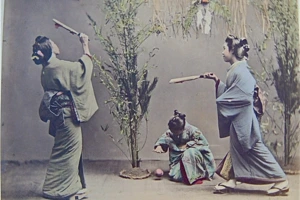
The Game
Hanetsuki is a traditional game similar to badminton, played with wooden paddles called Hagoita and a shuttlecock.
New Year Celebration
It is commonly played during New Year’s festivities.
Decorative Hagoita
Hagoita paddles are often decorated with intricate paintings or embroidery and are displayed as ornaments.
9. Kamifusen (紙風船) – Paper Balloons
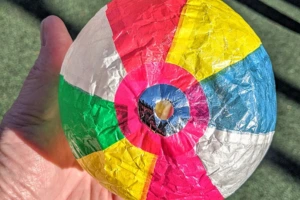
Material and Design
Kamifusen are lightweight balloons made from colorful washi paper.
How They Are Used
These balloons are inflated by hand and used in light, playful games.
Decorative Appeal
Apart from play, they are also used as seasonal decorations due to their aesthetic charm.
Where to Buy Traditional Japanese Toys
If you’re interested in owning a piece of Japanese tradition, there are several places to find these classic toys:
Specialty Toy Stores in Japan
Shops in Tokyo’s Asakusa district and Kyoto’s Gion area often sell handcrafted traditional toys.
Department Stores and Museums
Many department stores in Japan have sections dedicated to traditional toys. Museums also sell replicas of historical toys.
Online Retailers
Websites such as Amazon Japan, Rakuten, and specialty stores like Kyoto Handicraft Center offer a wide selection of traditional Japanese toys that can be shipped internationally.
Cultural Festivals and Events
Visiting Japan during festivals like the New Year or Children’s Day can be a great opportunity to purchase these toys from local markets and stalls.
For Overseas Customers
For those outside Japan, using a Japanese shopping service can make purchasing traditional toys easier. Services like Sendico, allow international customers to buy from Japanese websites and have items shipped worldwide. These services act as intermediaries, purchasing the toys on your behalf and handling international shipping. Additionally, some specialty stores on Etsy and eBay offer curated selections of authentic Japanese toys for global buyers.
Traditional Japanese toys continue to be enjoyed today, keeping cultural traditions alive. Whether through skill-based games like Kendama and Beigoma or festive toys like Fukuwarai and Hagoita, these toys hold deep historical value. Preserving them ensures that future generations can appreciate Japan’s rich heritage. Many traditional Japanese toys can still be found in specialty stores and online, allowing enthusiasts to experience their timeless charm.





